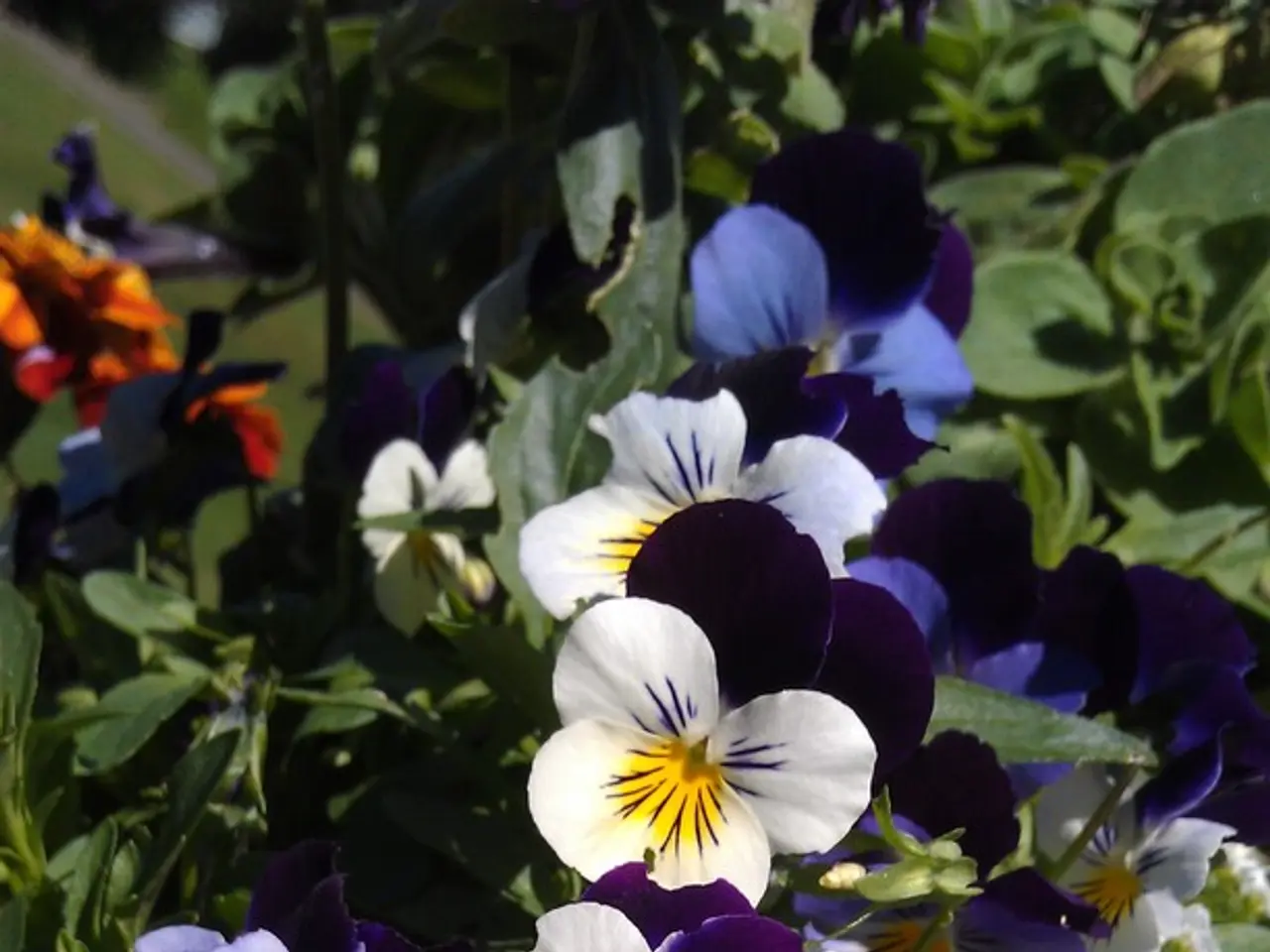Top 11 Indoor Plants Ideal for Asthma Sufferers
In a world where air quality can significantly impact the health of asthma sufferers, certain plants have been found to offer both air-purifying properties and respiratory benefits. Here's a list of 11 plants that can help improve asthma symptoms and purify indoor air:
- Peace Lily (Spathiphyllum) - This plant is renowned for its ability to remove volatile organic compounds (VOCs) like formaldehyde and benzene from the air. It also acts as a natural humidifier, which benefits asthma sufferers. However, peace lilies can be toxic to humans and pets, so they should be placed out of reach.
- Golden Pothos (Epipremnum aureum) - This plant is recognised for its strong air-cleansing qualities, reducing toxins including formaldehyde and carbon monoxide.
- Bamboo Palm (Chamaedorea seifrizii) - Efficient at filtering air pollutants such as carbon monoxide and formaldehyde, this palm contributes to better indoor air quality. It also acts as a natural humidifier, making it suitable for homes with asthma sufferers.
- Areca Palm - This palm acts as a natural humidifier and air cleanser, which can ease breathing for people with asthma.
- Spider Plant (Chlorophytum comosum) - Known for removing airborne toxins and increasing indoor oxygen levels, the spider plant is a great choice for improving air quality.
- Boston Fern (Nephrolepis exaltata) - This fern provides air purification and adds moisture to dry air, which helps relieve respiratory symptoms.
- English Ivy (Hedera helix) - This plant reduces airborne mold and fecal particles, improving air quality and potentially easing asthma symptoms.
- Lavender (Lavandula) - With its anti-inflammatory and calming effects, lavender can help reduce allergic airway inflammation in asthma.
- Eucalyptus (Eucalyptus globulus) - Containing cineole, which thins mucus and relieves chest congestion, eucalyptus aids asthma symptom relief when inhaled as steam or oil.
- Cardamom (Elettaria cardamomum) - Its anti-inflammatory properties can relax airways and improve oxygen uptake, supporting easier breathing.
- Mullein (Verbascum thapsus) - Traditionally used to soothe irritated respiratory tracts and loosen mucus, mullein can help those with asthma.
These plants help by either purifying indoor air—removing toxins, allergens, and particulate matter—or directly supporting respiratory health through anti-inflammatory and mucus-relieving properties.
While these plants can help improve air quality and potentially ease asthma symptoms, they should complement—not replace—medical asthma treatment and good indoor ventilation. It's also important to research each new plant and care for it properly to prevent mold and insects.
Some other plants worth mentioning include the red-edge dracaena, which is low maintenance and efficient at removing formaldehyde from the air, and the areca palm (Dypsis lutescens), which helps add more humidity to the air, beneficial for people with asthma.
General guidelines for keeping asthma-friendly plants healthy include avoiding over-watering, using a properly draining pot, keeping the plant in the proper light and temperature conditions, trimming away dead leaves, clearing out moldy soil and replacing if needed, and looking into natural fertilization methods.
- The Peace Lily (Spathiphyllum), known for removing VOCs, acts as a natural humidifier, benefiting those with asthma. However, it can be toxic, so position it out of reach.
- The Golden Pothos (Epipremnum aureum), recognized for reducing toxins, makes indoor air cleaner and less likely to trigger asthma symptoms.
- The Bamboo Palm (Chamaedorea seifrizii) filters pollutants like carbon monoxide and formaldehyde, improving indoor air quality for asthma sufferers.
- The Areca Palm acts as both a natural humidifier and air cleanser, easing breathing for people with asthma.
- The Spider Plant (Chlorophytum comosum) increases oxygen levels and removes airborne toxins, improving overall air quality.
- The Boston Fern provides air purification and adds moisture to dry air, relieving respiratory symptoms.
- English Ivy reduces airborne mold and fecal particles, potentially easing asthma symptoms while improving air quality.
- Lavender, with its anti-inflammatory properties, helps reduce allergic airway inflammation, benefiting those with asthma.
- Eucalyptus aids in asthma symptom relief by thinning mucus and relieving chest congestion through cineole.
- Cardamom's anti-inflammatory properties can relax airways and improve oxygen uptake, supporting easier breathing for those with asthma.
- Mullein, traditionally used to soothe irritated respiratory tracts, can help loosen mucus and benefit those with asthma.
In addition to these plants, the red-edge dracaena is low-maintenance and efficient at removing formaldehyde, while the areca palm (Dypsis lutescens) adds humidity to the air, which can be beneficial for those with asthma.
Maintaining a healthy environment for asthma-friendly plants involves careful watering, using a well-draining pot, providing the right light and temperature conditions, trimming dead leaves, keeping the soil mold-free, and exploring natural fertilization methods.






